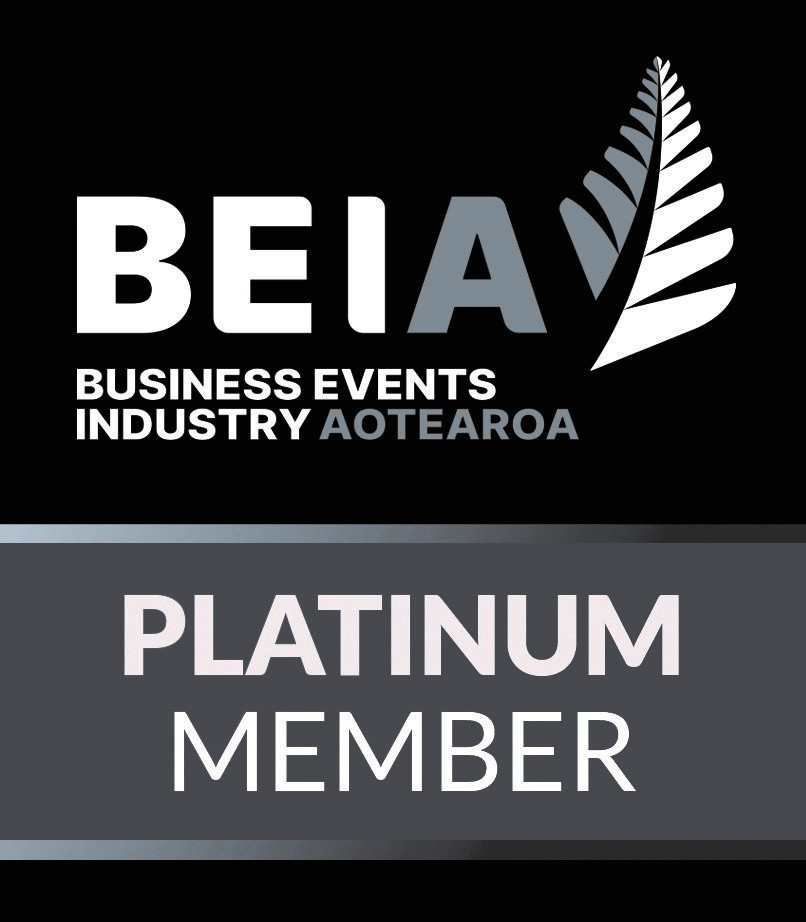
Great minds do not necessarily think alike
Article written by Terry Williams.
New Zealand associations are facing a changing future, with new opportunities and new challenges on the immediate horizon. There are emerging technologies, tech savvy generation Z, AI and borderless communications, partnered with challenging financial demands. The opportunities that new infrastructure, such as the NZICC, presents is creating new pathways for broader collaborations with global counterparts or similar industries – allowing new ecosystems to emerge. We wanted to get some of our Association leaders in New Zealand together to understand what they saw the challenges to be and bring them together to spark some fresh conversations.
It has been said that great minds think alike. That’s a dangerous paradigm for leaders to have. Solutions and innovations come from diverse people with a range of thinking, both in terms of content and styles, but brought together by a shared purpose and laser-like focus. The term ‘groupthink’ refers to when a cohesive group strives for unanimity so much that they override their motivation to realistically appraise alternative courses of action. It’s a pattern of thought characterized by self-deception, forced manufacture of consent, and conformity to group values and ethics. Now it’s commonplace in workplaces and even primary schools to hear terms such as ‘lateral thinking’ or ‘think outside the box’. This for New Zealanders comes naturally, and we are known for creative solutions, although we are challenged when sticking our head outside of the parapet with our good old ‘tall poppy syndrome’.
Innovative thinking shouldn’t, and probably won’t, happen by itself or by accident. Ahead of the recent conference held by the Australasian Society for Association Executives (AuSAE), the New Zealand International Convention Centre in partnership with AuSAE, ran a scholarship programme which bought together a dozen emerging leaders. It was an ambitious two hours of focused and high energy problem solving. Aside from the usual conferencing elements of learning and networking, the primary aim was to produce tangible actions the participants could implement on issues they considered to be real priorities.

Rather than have abstract issues foisted on them, or generic ones that random leaders might face, they participated in some ‘pre-work’ online surveying to identify issues with which they believed they collectively needed help. The survey results highlighted an array of potential workshop topics but a few clearly led the field. To blend a bunch of metaphors, it would get the ball rolling on the snowball at the top of the hill just above a string of precariously placed dominoes. And it did. It was evident that there was clearly much enthusiasm and idea ‘kindling’ and all it was waiting upon was a spark to light the flame. And it did.
After a brief opening with introductions and outlining of the mission, each of the four topics were tackled in the same systematic way, before rotating to the next. Each sub-group then added value to the work of the previous. And so on. Thus, the wisdom of this special crowd got out of their heads, shared ideas, built upon those ideas and it was captured for all to share and on-share. Plus, they all got the methodology to use with their own teams back in their own workplaces. The principles of suspending judgement, quality ideas through a quantity of ideas, and divergence before convergence were taught and applied.
The four issues addressed by the group that they themselves identified as high-volume, high-consequence priorities were:
- managing stakeholders;
- keeping people to their promises (trust);
- cost-effective innovation;
- networking.
The simple and repeated steps applied to each issue by the 3 subgroups were: brainstorm sub-issues without comment or judgement; discuss and rank those sub-issues; for each sub-issue brainstorm without comment or judgement actions that might form part of a solution; and rank and consolidate those actions. “A good game is a fast game so if in doubt move on” became a mantra to make the most of the limited time. To get the ideas captured and reasonably organised and ranked via the filter of the collective perspectives of the diverse group of industry emerging leaders would result in a document that each participant could then build on and test with their own people when time was less of a precious resource.
Successful people ask good questions. Questions kicked things off in the groups, with first answers furthering additional thought. Rarely is the first thought the best thought.
With the stakeholder issue, the sub-issues were both relational and logistical. Who are they? Who do they need to be? What are their key drivers? How can relationships be maintained with limited time and resource? Is there some algorithm that balances effort with tangible and intangible returns on ‘investment’? What is the diplomacy of juggling the different, or even conflicting, expectations of different stakeholders?

Participants endorsed a systematic approach to managing stakeholders. Look back on past issues and how they were handled (or not) and learn from that. Ensure future issues get addressed as soon as possible and again learn from that, getting that learning into your people and systems. Create and maintain a ‘map’ of the ‘stakeholder eco-system’. Get it in front of people’s eyes. Auto-schedule reasons to stay in touch from seeking to update contact details to on-sharing info they may find of use, all of course complying with opt-in privacy requirements. Some key verbs that cropped up were research, homework, and onboarding. These were essential for understanding why they wanted to be stakeholders and why they might not at some stage. Keeping a finger on the pulse enables early interventions if required and early interventions require less energy and drama. A specific person needs to have a specific KPI to collect and monitor expectations and part of an engagement plan. Leverage online automated or freelancing resources to do the legwork. Orwell’s book ‘Animal Farm’ has a famous quote, “All animals are equal but some animals are more equal than others”. To paraphrase slightly, all stakeholders are equal but some stakeholders are more equal than others so create a tiered matrix assigning a level so that appropriate effort is applied. Not too much, not too little – the Goldilocks principle.
With the trust issue, the sub-issues related to culture and accountability. How can consistency be ensured with standards of trust both inside and outside the organisation? What controls do we have over expectations and consequences?
Leaders need to be thoroughly consistent in their own reliability and trustworthiness, both inside and outside their team. Demand high standards and live up to them. Be firm with non-compliance and disappointments. Overwhelmingly, all groups strongly emphasised the need for no surprises – that all critical expectations be explicitly set out in advance. The challenge in negotiation is not in the negotiation itself but in its implementation and absolute clarity of expectations is the difference-maker. The emerging leaders group agreed.
With the cost-effective innovation issue, the sub-issues were around money, risk and planning. How to maximise limited or non-existent budgets? How can people’s inherent change aversion be challenged? How can genuine trends be gotten in front of and passing fads be given the limited attention they warrant?
It’s reasonable to assume that an emerging leaders group by its very nature would be generally younger than a group of leaders who had already emerged. That said, the group was probably made up of people born closer to when Wham broke up rather than when the Beatles broke up. Perhaps because of this they were quicker to suggest and more open to moving towards non-traditional ideas like crowdsourcing and the gig economy as ways of addressing inhouse resource limitations. The online freelancing portal fiverr.com was cited as one example of how to get work done on a budget that also meant it could be done overnight outside New Zealand’s time zone work hours. Using such options though did mean that they would have to have a very clear idea of what they wanted and be able to communicate it quickly. For example, having a coding student in Karachi whip up an online survey app was viable and economic, but the specs needed to be explicit.
Also of concern with innovation and change was the need to bring everyone along for the ride. It was declared that people don’t necessarily resist change; they resist being changed. As many people as possible need to know what’s going on as soon as possible. This not only lessens their potential opposition but it may generate their input which could prove valuable.
With the networking issue, the sub-issues were around time, purpose, techniques and interpersonal skills / personality. How can someone who may not be intrinsically a natural ‘people person’ turn it on when required? How can the traditional negative clichés about networking be overcome? What about even the basics like remembering people’s names?
Important things get scheduled and scheduled things get done. So, if the group truly felt networking and making connections was important, they felt they needed to treat it like anything else and set goals, targets and routines. One participant for example responded by committing to each week connecting with five new industry people. Smart people set SMART goals (specific, measured, achievable, relevant and timed).
The fuzziest and funniest actions were those about personality and the awkwardness that some people felt they had around meeting new people without it seeming forced or mercenary. Some very practical tips arose, such as approaching the food and starting a conversation with observations about the hors d’oeuvres. Buffet reconnaissance is a good idea from both a nutritional and social point of view. Acting as a ‘matchmaker’ between others was seen as a way of adding value between mutual connections who know you but may not know each other. There were too many other specific social strategies to mention in this brief article but, rest assured, if ever you’re a social function these emerging leaders are in charge of, you’re in good hands.
Overall at this creative-thinking workshop, the emerging leaders’ questions provoked initial thoughts. Those initial thoughts then focussed discussion. This discussion generated further questions and responses creating a snowball effect. Everyone departed as the flipcharts were collected and collated with the last act being a desperate game of ‘paper scissors rock’ to determine who’d be typing it all up.
This article started with arguing against the cliché ‘great minds think alike’. Better to say that great minds are different, and they think together. Let’s end this article with another cliché – give someone a fish and feed them for a day; teach someone to fish and feed them for a lifetime. We should all definitely eat more fish, but the point here is not that. This workshop did generate some fine starting points, ideas and actions. You’re welcome to them. I hope you find them useful and, if so, on-share them. Solutions, innovations and great leaps forward do not arise through business as usual. You need to shake things up, fix them when they’re not broken – it’s always better to fix your roof when it’s not raining - and embrace business as unusual.
What we learnt is the future of New Zealand associations is bright, and we truly look forward to seeing what the next cohort of the NZICC scholarship recipients can add to this thought leadership.
Article by Terry Williams, People Engagement Expert.
https://www.terrywilliams.info



